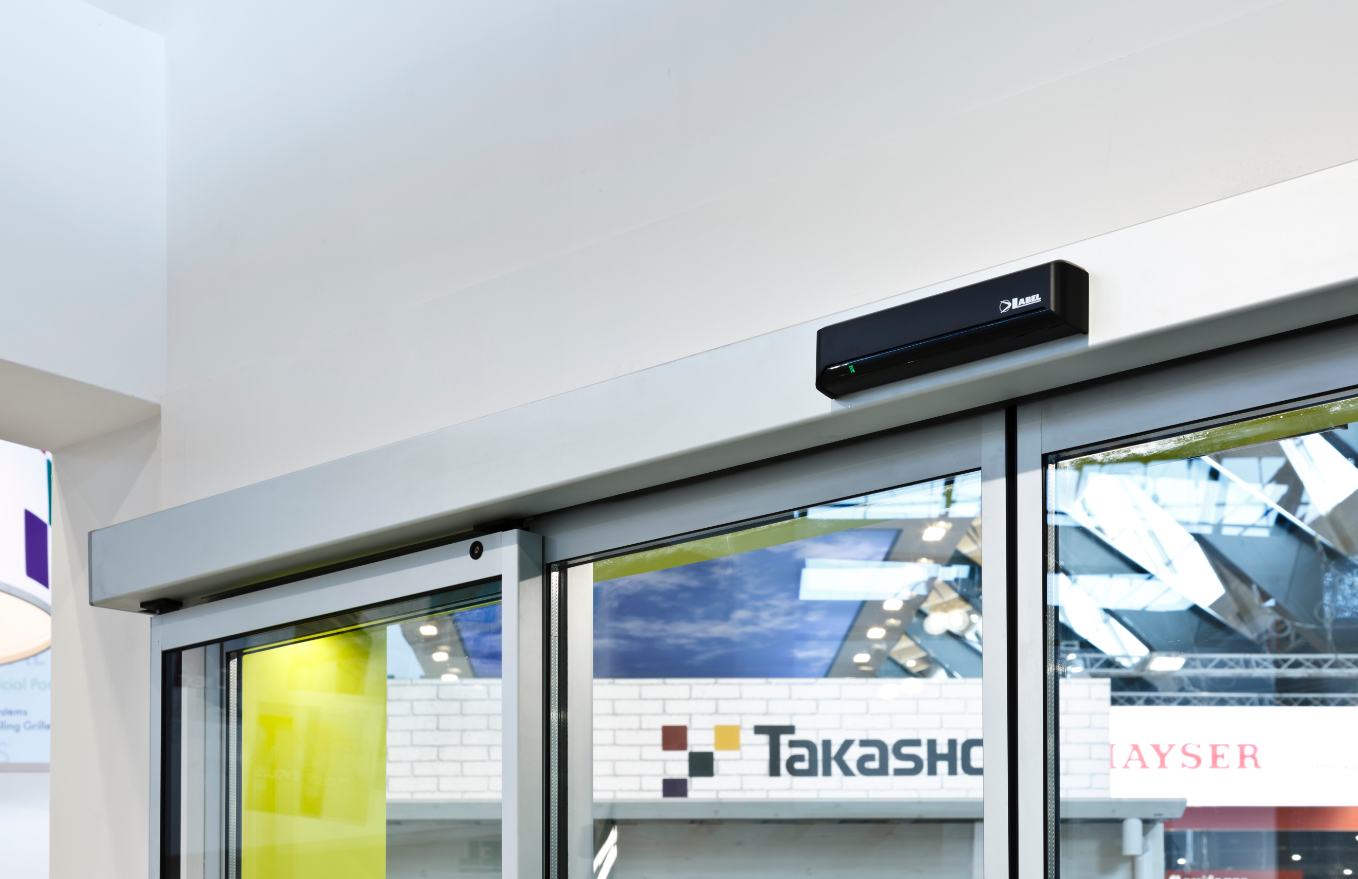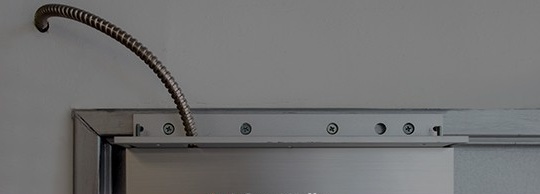Automatic doors use sensors to detect motion or proximity, and then electrical and mechanical systems actuate the door’s opening and closing based on this input.
Basic Principles of Physics Involved
In understanding how automatic doors function, it is crucial to comprehend the core principles of physics that govern their operation. From Newton’s laws to thermodynamics, these scientific tenets provide a framework for the mechanics, electronics, and materials used in automatic doors.

Newton’s Laws of Motion
The three Newton’s Laws of Motion play an essential role in the opening and closing mechanisms of automatic doors.
First Law (Inertia): A door at rest stays at rest and a door in motion stays in motion unless acted upon by an external force. This is particularly relevant for ensuring that the door stays either fully open or fully closed when not in use.
Second Law (F=ma): The force exerted on the door is directly proportional to the mass of the door and its acceleration. In practical terms, this means that heavier doors will require more powerful motors.
Third Law (Action and Reaction): For every action, there is an equal and opposite reaction. This law comes into play when considering the forces exerted by the door on its surroundings, and vice versa.
Energy Conversion
In an automatic door system, several forms of energy conversion occur to facilitate the opening and closing mechanism. Here, Mechanical Energy and Electrical Energy are most notable.
From Electrical to Mechanical: The electrical energy from the power source converts into mechanical energy through the motor, which moves the door.
Mechanical to Kinetic: The mechanical energy in the motors and gears turns into kinetic energy as the door slides or swings open.
Laws of Thermodynamics
Understanding the Laws of Thermodynamics helps in designing energy-efficient and safe automatic doors.
First Law (Conservation of Energy): Energy cannot be created or destroyed, only transformed. This principle emphasizes the importance of energy-efficient designs.
Second Law (Entropy): Systems tend to move toward a state of maximum disorder or randomness. In terms of automatic doors, this points to the need for regular maintenance to ensure the system’s efficiency.
Sensors and Detection Systems
Automatic doors employ a variety of sensor technologies to detect motion or proximity, thereby triggering the door to open or close. The choice of sensor depends on factors like range, sensitivity, and environmental conditions. The most commonly used sensors are Infrared, Microwave, Ultrasonic, and Laser Sensors. These sensors convert environmental stimuli into electrical signals, allowing for a seamless interaction between the door and its users or surroundings.
Infrared Sensors
Infrared sensors primarily work on the principle of detecting thermal radiation emitted by objects, such as humans. These infrared sensors are often placed above the door or to the sides to cover a wide detection area.
Wavelength Sensitivity: Typically sensitive to wavelengths between 700 nm to 1 mm.
Applications: Due to their sensitivity to heat, these sensors find primary use in indoor settings where temperature conditions are more stable.
Microwave Sensors
Microwave sensors emit microwave radiation, which bounces off objects and returns to the sensor, giving valuable information about the object’s distance and speed. Often used in radar technology, these sensors are quite reliable and can cover a larger area.
Frequency Range: Usually operate in the range of 300 MHz to 300 GHz.
Applications: Suitable for both indoor and outdoor usage due to their high range and sensitivity to motion rather than temperature.
Ultrasonic Sensors
Ultrasonic sensors utilize sound waves at frequencies higher than the audible range for humans. The sensor emits a sound wave, and by measuring the time it takes for the echo to return, it calculates the distance to an object.
Frequency Range: Operate at frequencies above 20 kHz, usually in the range of 40 kHz to 400 kHz.
Applications: Commonly used in car parking systems, these sensors are highly accurate but have a relatively shorter range compared to microwave sensors.
Laser Sensors
Wavelength: Generally, operate in the visible light spectrum, around 600-700 nm.
Applications: Due to their high accuracy, they find uses in specialized environments like laboratories or industrial settings where precision is crucial.
Mechanical Systems
Mechanical systems serve as the backbone of automatic doors, executing the physical movements that allow the doors to open and close. These systems usually incorporate motors, gear mechanisms, and hydraulic or pneumatic systems to convert electrical signals from the sensor into kinetic energy, thereby achieving motion. Let’s delve into the details of these components.
Motors and Actuators
Motors and actuators provide the primary force that drives the door. These devices turn electrical energy into mechanical energy, which sets the door in motion.
Types of Motors: Common types include AC motors, DC motors, and stepper motors. The choice depends on the needed torque and speed.
Actuator Types: Linear actuators and rotary actuators are the primary kinds. Linear actuators produce motion in a straight line, while rotary actuators produce a circular motion.

Gear Systems
Gears are essential components that amplify the motor’s force to achieve the required door motion. Gear systems can come in various configurations, such as spur gears, worm gears, and planetary gears, each offering different advantages.
Spur Gears: These are straightforward, featuring teeth that are parallel to the axis of rotation. They are ideal for simple, high-speed applications.
Worm Gears: These are more suited for high torque, low-speed applications and are commonly used in heavy doors.
Hydraulics and Pneumatics
Hydraulic and pneumatic systems rely on fluid or air pressure, respectively, to produce motion. These systems are generally more robust and capable of handling heavier loads than purely mechanical systems.
Hydraulic Systems: They use an incompressible fluid, typically oil, to transmit force. Hydraulics are often used in industrial settings and can handle very heavy doors.
Pneumatic Systems: These use compressed air to transmit force and are generally faster but less powerful than hydraulic systems.
Electrical Systems
The electrical systems in automatic doors serve as the nerve center that connects sensors to mechanical elements. They control the flow of electrical energy, ensuring the door responds accurately and swiftly to stimuli like motion or proximity. These systems consist primarily of circuitry and control units, various power sources, and a host of safety measures.
Circuitry and Control Units
The electrical circuits and control units are crucial for processing the signals from the sensors and converting them into actions carried out by the mechanical systems.
Microcontrollers: These are small computers on a single integrated circuit (IC) that handle the logic and decision-making for the door’s operation.
Signal Processing: Analog or digital signal processors interpret the input from sensors and determine whether to open, close, or hold the door.
Power Sources
Power sources provide the electrical energy necessary for the sensors, control units, and mechanical systems to function.
Direct Power: This involves a simple connection to the building’s electrical grid. It’s the most straightforward but may be susceptible to power outages.
Battery Backup: Many systems come equipped with battery backups to ensure functionality during power interruptions.
Solar Panels: Solar energy is an eco-friendly alternative that can power some lightweight automatic doors, mainly in outdoor settings.

Electrical Safety Measures
Safety is paramount in any electrical system, and automatic doors are no exception. These measures are designed to protect both the users and the equipment.
Circuit Breakers: These safeguard the system from power surges or electrical malfunctions, which could otherwise cause fires or damage.
Grounding: Proper electrical grounding ensures that any stray electrical charge will move into the Earth, reducing the risk of electrical shock.
Isolation: Electrical isolation techniques can be used to separate different parts of the electrical system to prevent cross-circuiting and other risks.
Material Science
Material science plays an instrumental role in the construction and efficiency of automatic doors. The choice of materials impacts the door’s strength, longevity, and even its thermal and acoustic properties. Let’s break down the science behind the materials commonly used in these doors.
Properties of Materials Used
Different applications call for different materials, each with its unique set of properties. From metals like aluminum to synthetic materials like polyvinyl chloride (PVC), the choice often depends on specific requirements.
Aluminum: Widely used due to its light weight and strength. It is also corrosion-resistant, making it ideal for outdoor applications.
PVC: Often used in indoor settings, PVC is prized for its low cost and versatility but lacks the strength of metals.
Glass: Tempered glass is often used for its aesthetic appeal and transparency, though it must meet safety standards to be impact-resistant.
Strength and Durability
The material’s strength and durability are critical factors that determine the door’s lifespan and its ability to withstand daily wear and tear.
Tensile Strength: This is a measure of how much force a material can withstand while being stretched or pulled. Metals like steel excel in tensile strength.
Fatigue Resistance: This is the ability of a material to withstand repeated cycles of stress without breaking. This property is critical for automatic doors that see frequent use.
Corrosion Resistance: Materials like aluminum and stainless steel are preferred in environments where corrosion could be an issue, such as in coastal areas or chemically active environments.
Thermal and Acoustic Insulation
Materials used in automatic doors often need to offer insulation properties, either to conserve energy or to reduce noise pollution.
Thermal Insulation: Materials like polyurethane foam can provide excellent thermal insulation, helping to maintain indoor temperatures and reduce energy costs.
Acoustic Insulation: Certain materials can also provide soundproofing features. Rubber seals and dense materials can reduce the transmission of sound through the door, contributing to a quieter environment.
